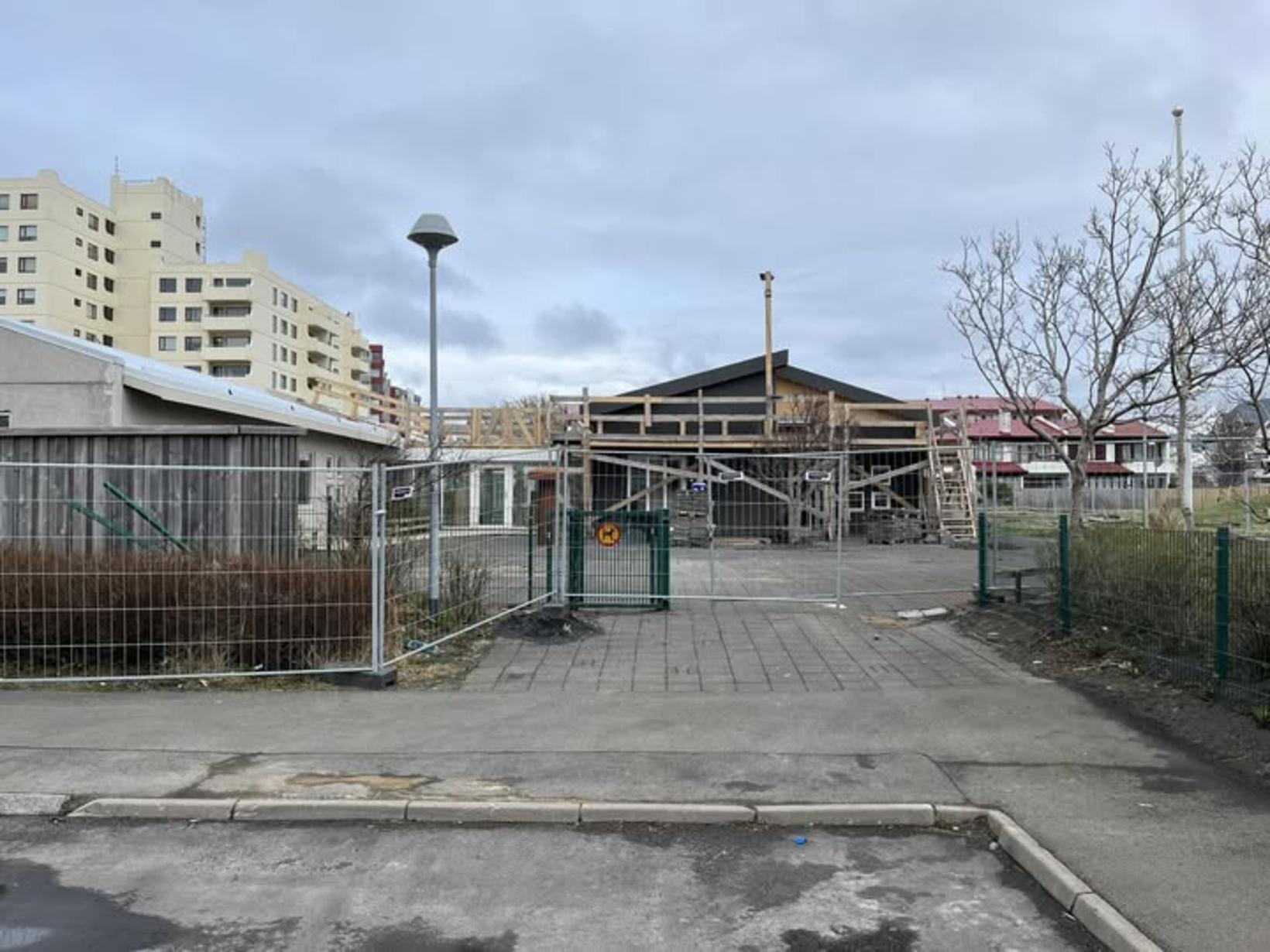In these neighborhoods in Amsterdam, vaccination starts with eating together and overcome distrust
:format(webp)/s3/static.nrc.nl/wp-content/uploads/2024/06/20100532/web-2006BIN_Vaccin.jpg)
On this Friday afternoon at the end of April, half an hour before the official start, a row for the GGD walk-in consultation in the Amsterdam Bijlmer. Children from the age of four can immediately, with or without an appointment, get a missed puncture from the National Vaccination Program. A woman came by with her seven -year -old granddaughter – the time, during the day, is complicated for many working parents, she says. « That’s why I’m going. »
The reasons why people do not allow themselves to be vaccinated immediately when they are summoned to do so, says youth doctor Kirsten Lindeman. « It is rarely unwilling, » she emphasizes. For example, people can have negative experiences with an earlier shot, say the colleagues from Lindeman, youth nurses from the GGD in the Amsterdam Bijlmer. Or there are practical obstacles, such as the lack of means of transport or time: for vaccinations, parents with children can only go during office hours. « The invitation letters are also not read, not understood or forgotten by local residents, » says youth nurse Rosa Wessel.
It is a long -breath matter. Every neighborhood requires its own approach
A Dutch-speaking father who comes to the walk-in consultation with his fourteen-year-old daughter recognizes the uncertainty about the RIVM letter, which is only sent by post and in Dutch. « And that while I still speak and read the language. » According to the father, the range would become much greater if the letter was also sent in English. The people in Southeast have different cultural backgrounds, which means that English is regularly spoken at the walk -in consultation.
In this district, a personal relationship with the various communities is very important, Lindeman explains. « In this neighborhood it is first about your family, how everyone is doing, and then often about food, » she says. The municipality therefore organizes joint meals, where parents meet and share experiences. Vaccination is not a separate goal, but part of a broader conversation about what lives with local residents.
Read also
Vaccination rate does not fall any further, but the RIVM does not know for sure
Mistrust
On the other side of Amsterdam, in the Nieuw-West district, many residents experience distrust of the government in general, and vaccinations in particular, GGD youth nurse Aicha Karimi knows. « People first thought I got a kind of government bonus to convince them to take a vaccination, » she says. She also regularly hears the misconception that vaccinations, such as the injection against mumps, measles and rubella (BMR), would cause autism.
That is not without consequences: measles infections have increased in the Netherlands in recent years. Last April, 347 cases of measles had already been reported nationally, a significant increase compared to 204 cases in 2024 and only 7 infections in 2023, shows figures from the RIVM. The reports mainly come from the urban areas in the Randstad and in the GGD regions of Groningen, Southeast Brabant, Gelderland, Flevoland, Hollands-Midden and Kennemerland.
This May holiday saw youth nurse Karimi travel many residents to Morocco or Romania – countries where there have recently been large measles outbreaks. This year, 25 people were infected in the Netherlands after a stay in Morocco. Three people were infected after a trip to Romania. At the end of March there was a peak in New West, when ten cases recovered in one week.
When the spots appear on the skin, a bell often starts ringing, but then the infectious period has already started
New West is therefore one of the ‘focus areas’ in Amsterdam-neighborhoods with a low vaccination rate: 63 percent compared to national 81 percent. But New West is also the district where Amsterdam started in Coronatijd (2021) with a successful ‘neighborhood-oriented vaccination approach’, which is now being followed nationally. The core of this: Personal health care close to home, for example with an accessible consultation hour, information by ‘key figures’ in the neighborhood, and giving pricks in schools and in community centers. Even though Nieuw-West is still lagging behind, thanks to that approach, the turnout for a prick against measles there rose there last year with 7 percentage points. The turnout for this BMR vaccination in all Amsterdam rose to 79.5 percent.
The government is now allocating 7 million euros for intensifying such a neighborhood -oriented vaccination approach, to combat new infections and to increase the vaccination rate. Amsterdam, Rotterdam, The Hague and Utrecht are expected to receive 5 million euros together, although the cities say they need more money structurally. This amount is part of the public health budget and came through the Senate. The remaining 2 million goes to RIVM. This can use the money nationally to improve the clarity of vaccination invitations nationwide.
/s3/static.nrc.nl/images/gn4/stripped/data131890526-a8e753.jpg|https://images.nrc.nl/hCyd1NWVkZxjvlfXt56ipugwBHg=/1920x/filters:no_upscale()/s3/static.nrc.nl/images/gn4/stripped/data131890526-a8e753.jpg|https://images.nrc.nl/v5v67gQizqF5poC1VGUyIZfje3E=/5760x/filters:no_upscale()/s3/static.nrc.nl/images/gn4/stripped/data131890526-a8e753.jpg)
Photo Joris van Gennip / ANP
Visibility
In New West, youth and district nurses provide information with meals, says youth nurse Karimi. When she noticed how much distrust there is towards the government and vaccination, for example, she took the initiative to organize breakfasts through Stichting Moederskracht (a women’s organization against poverty). « In the beginning it was not about vaccination at all, » she says. « I first had to build that trust. »
For winning trust, key figures from the neighborhood are very important, says Karimi. Such as Nadia Sbai, who has been doing volunteer work in New West for twenty years. She has been taking care of ‘High Teas’ in nursing homes to connect residents for years, makes packages with collected items from the neighborhood for Christmas and Sugar Festival, or prepares tasty snacks for people who are alone. A well -known volunteer such as Nadia Sbai can introduce youth nurse Aicha Karimi to other local residents: « If I say that Aicha will only tell them something, without obligations, then it is, » says Nadia Sbai.
You also need to know the right places in the neighborhood to become visible as a GGD, the youth nurses say. In New West, a large part of the Moroccan community can be reached at school through community centers in the neighborhood or at parent meetings, says Karimi. In Southeast, the churches of the Caribbean, Eritrean and Ghanaian communities offer an entrance.
With a coverage ratio of 83.2, Amsterdam is not nearly on the 95 percent advised by the World Health Organization for BMR. But the rising line of the turnout is « hopeful, » says youth nurse Wessel. « It is a long -breath matter. Every neighborhood requires its own approach. If it was easy, the vaccination rate would have been higher for a long time. »
Read also
In The Hague, the low vaccination rate is challenged with an AI-hologram that answers questions about vaccinations

:format(webp)/s3/static.nrc.nl/images/gn4/stripped/data130049182-3397b2.jpg)
/s3/static.nrc.nl/images/gn4/stripped/data132005341-a7512c.jpg|https://images.nrc.nl/rMdy3aa_3d4H1PhoMuY0Fh268K8=/1920x/filters:no_upscale()/s3/static.nrc.nl/images/gn4/stripped/data132005341-a7512c.jpg|https://images.nrc.nl/8SP5UbMSIeCzEHxAx6IXBIb37iY=/5760x/filters:no_upscale()/s3/static.nrc.nl/images/gn4/stripped/data132005341-a7512c.jpg)
/s3/static.nrc.nl/wp-content/uploads/2025/05/09171635/data131837012-e62e66.jpg)
/s3/static.nrc.nl/images/gn4/stripped/data131990772-c1834c.jpg)




